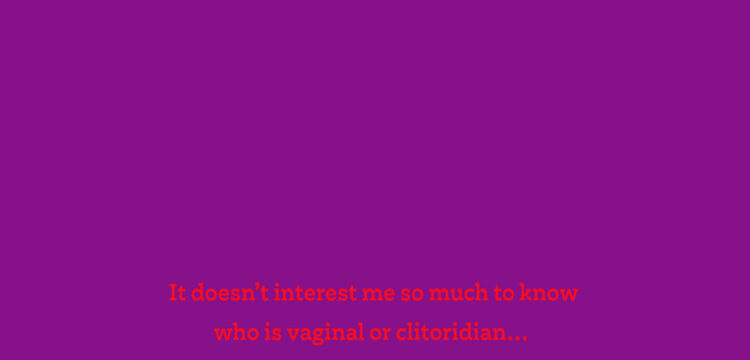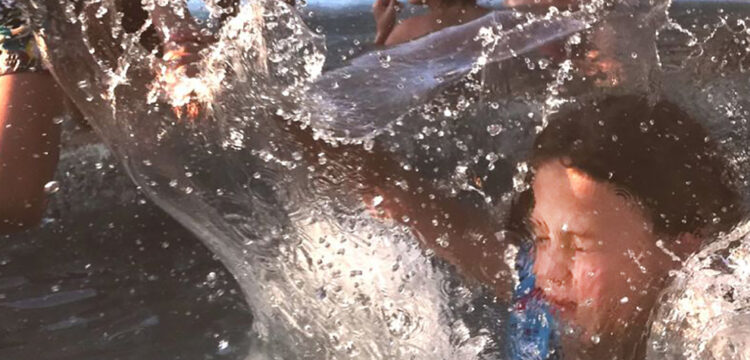Two Aesthetics of Apocalypse
On our “well-deserved” evils, sinful nature and aesthetic representation
Ruth is a collector of writings, a site dedicated to grey literature, unpublished and experimental texts. Conceived by Manuela Pacella, was born from the pleasure of writing and reading. We are very glad to host a text each month, selected from one of the sections of the four-headed Ruth: Yellow Dog, Hungry Ghosts, Free Spirits, Brain New.
This month we chose from Hungry Ghosts the piece Two Aesthetics of Apocalypse by the Georgian-born and New York-based art writer and curator Nina Mdivani. This short essay was written in April 2020 as a response to our “multidimensional existential crisis,” taking as a starting point of investigation the 1965 The Imagination of Disaster by Susan Sontag.
Recently as I was doing research on narrative structures I came across The Imagination of Disaster, a 1965 essay by Susan Sontag, in which she eerily describes our collective traumatic state of mind as COVID-19 roams the world and reaps its victims. The thesis of Sontag’s essay is that science fiction films of the 1960s succeeded with the general public as the most satisfying form of entertainment by portraying unimaginable horror through narrative of simplistic and mind-numbing banality.
Similarly to what Sontag refers to as “aesthetics of disaster,” today we are touched on a deeper level as an impersonal, unthinkable danger paralyzes our lives, and this multidimensional existential crisis is qualitatively different from what we have experienced before. Further contemplating Sontag’s thesis, I traced two broad directions in the aesthetics of apocalypse as it has often been presented in Western art until now.
The first of these aesthetic constructions is built upon passive understanding of our role in the larger cosmos, while the second takes a more assertive, utilitarian, capability-based approach of working through threats to our existence through spiritual undertakings. The global crisis we are facing today addresses a different threat to human society by physically separating us. The menacing effects of this particular apocalypse are directed toward attributes of modern society, such as hypo-connectivity and value of the physical community. This is what is distinctive from the dark times faced before.
One long tradition of thinking through and representing existential crises goes back to associating our “well-deserved” evils with our sinful nature, disasters are brought to us by individual or collective moral destitution and hence not likely to be stopped by humans, our fate is not ours to decide. In ancient Greece, as well as in Rome, human tragedies were largely perceived as decided by fancies and willfulness of gods. Humans were good-looking pawns with limited willpower. The advancement of Christianity changed all this, bringing stricter moral codes to the fore and giving men more agency and thus more evolved moral responsibilities. Men and women became morally accountable for their actions, as an Arbiter, a Judge was put in higher place and anyone who decided to ignore His rules got punished. Evidently, the eruption of Vesuvius in AD 79 was partially blamed by some Romans as well as by the nascent Christian community on libertarianism and the decadence of the Pompeian and Roman society. Western civilization is built on guilt, shaming, it is built into our social structure as much as it is a default aspect of Christianity, a backbone of the whole civilization as we knew it at least up until now.
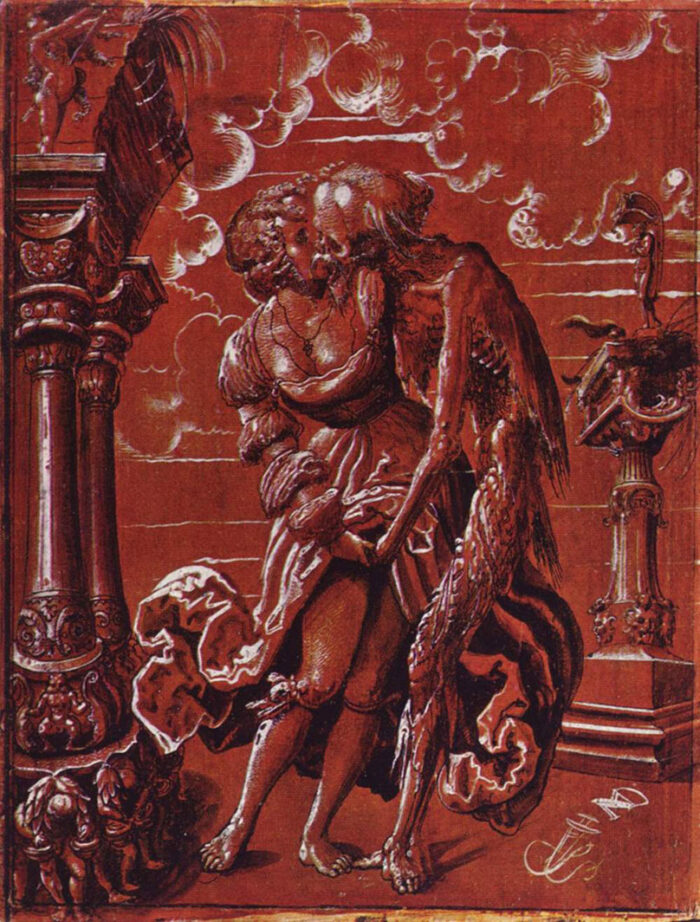
A consistent narrative has portrayed this moral accountability in the context of apocalypse and all its outcomes starting in the 14th century with the so-called dances of death, dance macabre, Totendanz. The bubonic plague or Black Death ravaging Europe in 1347-1353 and decimating from 30% to 60% of the continent’s population, brought with it a visual storyline that remained part of European historical memory as well as of the universal language of the arts. The dancing skeleton symbolizing death first appears in 1424 in the form of a fresco in the Parisian cemetery Des Saints Innocents. In this fresco death is overtaking all people, no class is exempt—kings and popes, clergy and peasants, traders and dames—all fall victims, a trend that keeps going. Usually the dance is shown as a skeleton pulling a person in a distinctly recognizable attire, referencing his or her class. The image usually was accompanied by didactic poems teaching us that, no matter who we are, we still have the same end.
Through this allegorical portrayal the human frailty and transience has been explored, something that continues to be investigated by a majority of contemporary artists. However difficult it is to choose one artist and one work to illustrate this direction of thinking, but Alexandra Bricken (b.1967) follows this macabre movement of figures in her 2016 multilevel installation titled ESKALATION, first presented at Hepworth Wakefield, a museum in West Yorkshire, England. This work, that was later presented in the Central Pavilion at the 2019 Venice Biennale, shows figures or rather their skins frozen in their simplistic movements, trying to ascend to the stairs that lead nowhere. In her own words Bricken shows “a dystopian view of what the end of humanity might look like.”
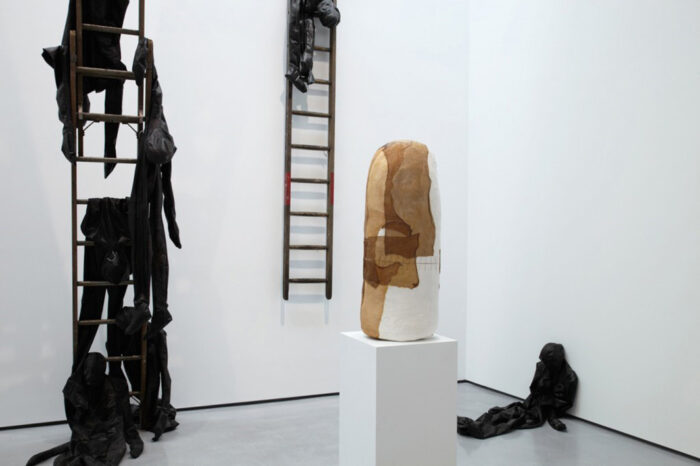
The second tradition of apocalyptic aesthetics is linked to a more empowering image of our human being who has parts of an animal and yet, an equal amount of intellectual and spiritual capacity. This view of vast human capacities links us to primordial, magical, shamanistic, intraspecies connection that empowers us to work with challenges, either when they are apocalyptic or not. A magician, Faustian figure is at the center of this sensibility and rituals of every sort are the tools. Social orders come and go, but this powerful Renaissance wo(man) is there in our historical visual memory.
In contrast to the first type of apocalypse aesthetics outlined above, this second type might not have always been directly portrayed in the midst of the global crisis оr the end of the world, but ritualistic, utilitarian attitudes are always noticeable. Rituals need privacy and hence they are always portrayed as though we came across them by chance. Judith Beheading Holofrenes, 1599 by Caravaggio (1571-1610) is an example of a cold, concentrated brutalism of a ritual beheading of the biblical Syrian general. Although Judith’s storyline is not directly associated with the end of the world it is associated with the planned destruction of her home city Bethulia, a potential allegorical stand-in for Jerusalem. Caravaggio’s own life was scarred by the bubonic plague that killed his father and other close members of his family. The same theatrical brutalism and ritualistic capability essential to Caravaggio expressed through the canon of Western as well as Eastern visual art, including Bosch, Breugel, Titian, various romantic interpretations of Faustian legend in the 19th century and in a vast array of contemporary art.
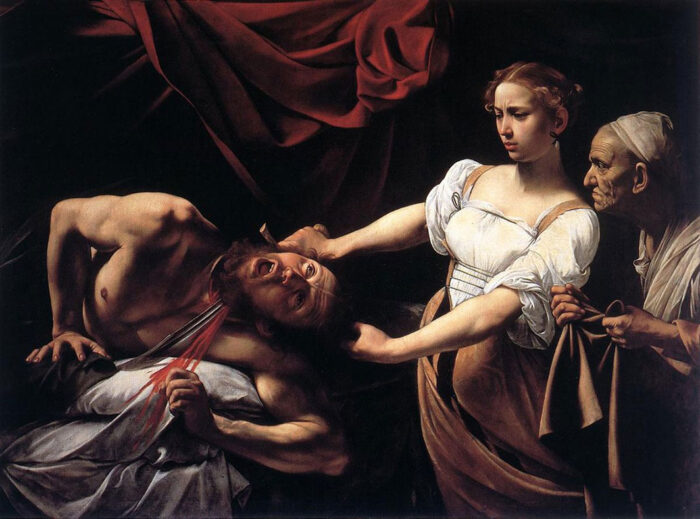
Among the many excellent examples of portraying the reality where a person is at the center of the universe, hence (presumably) capable to work with the apocalyptic emergencies if they arise, I would cite only one. In Balkan Baroque, a video/installation/performance by Marina Abramovic (b.1946), the artist diligently scrubs a surrounding pile of cow bones with a metal brush, soap and water. Abramovic did this for six hours on four consecutive days on the background of an installation addressing the Serbian war as well as her own personal narrative in 1997, as part of the 47th Venice Biennale. The artist’s statement about this work outlined her intention to use a personal ritual to transcend to the universal, while washing your hands off blood is simply impossible. Yet, here there is also the aesthetic of apocalypse as seen through a more human-centered approach. Both Abramovic and Caravaggio’s Judith might or might not solve their own nor global problems, but they are capable of trying while giving us stunning visual clues for it.
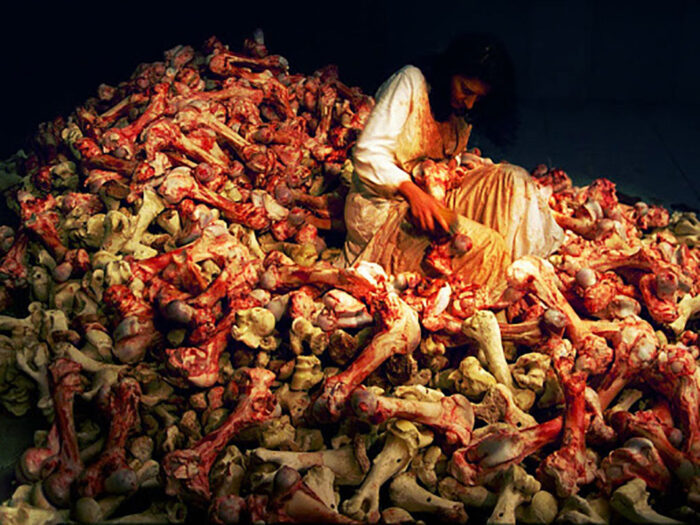
The deeply felt dread we are collectively experiencing today amidst COVID-19 is different from the aesthetics outlined above and is likely to produce yet another type of “aesthetics of disaster.” Mistrust of those in power, inability to understand where and when exactly this pandemic will stop, whether it will disrupt all the bonds as we subscribed to solitary confinement are the main issues facing artists and thinkers today. It will take time to produce art of substance that would adequately address ongoing issues. However, there is one unique literary prophecy I encountered by chance. In a bleak, but brilliant short story by a Russian writer Ludmilla Petrushevskaya (b.1938), titled Hygien, published in 1990 а similar pandemic disrupts an unnamed city, only a girl and a cat surviving from one multigenerational family. The girl is the one who gets infected first in her family and yet, she survives as she is the only one still bound by her humanness, through her loyalty to the cat when everything else, including human bonds, are disrupted. Petrushevskaya’s visceral and minimalistic storytelling underscores all our dreads. And yet, it reminds us that attachments matter and while physical cleanliness might not save us, ethical and moral cleanliness will.




